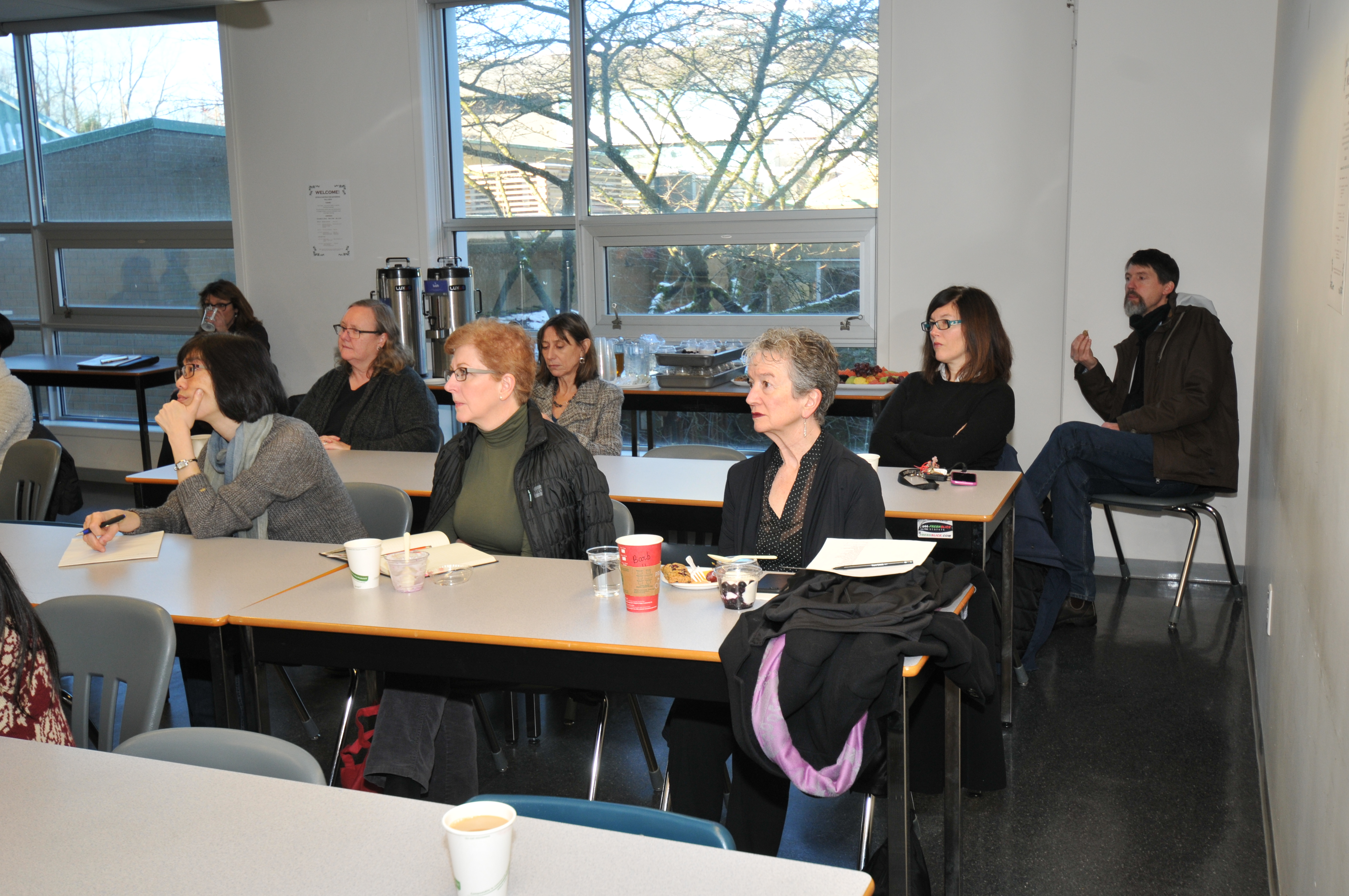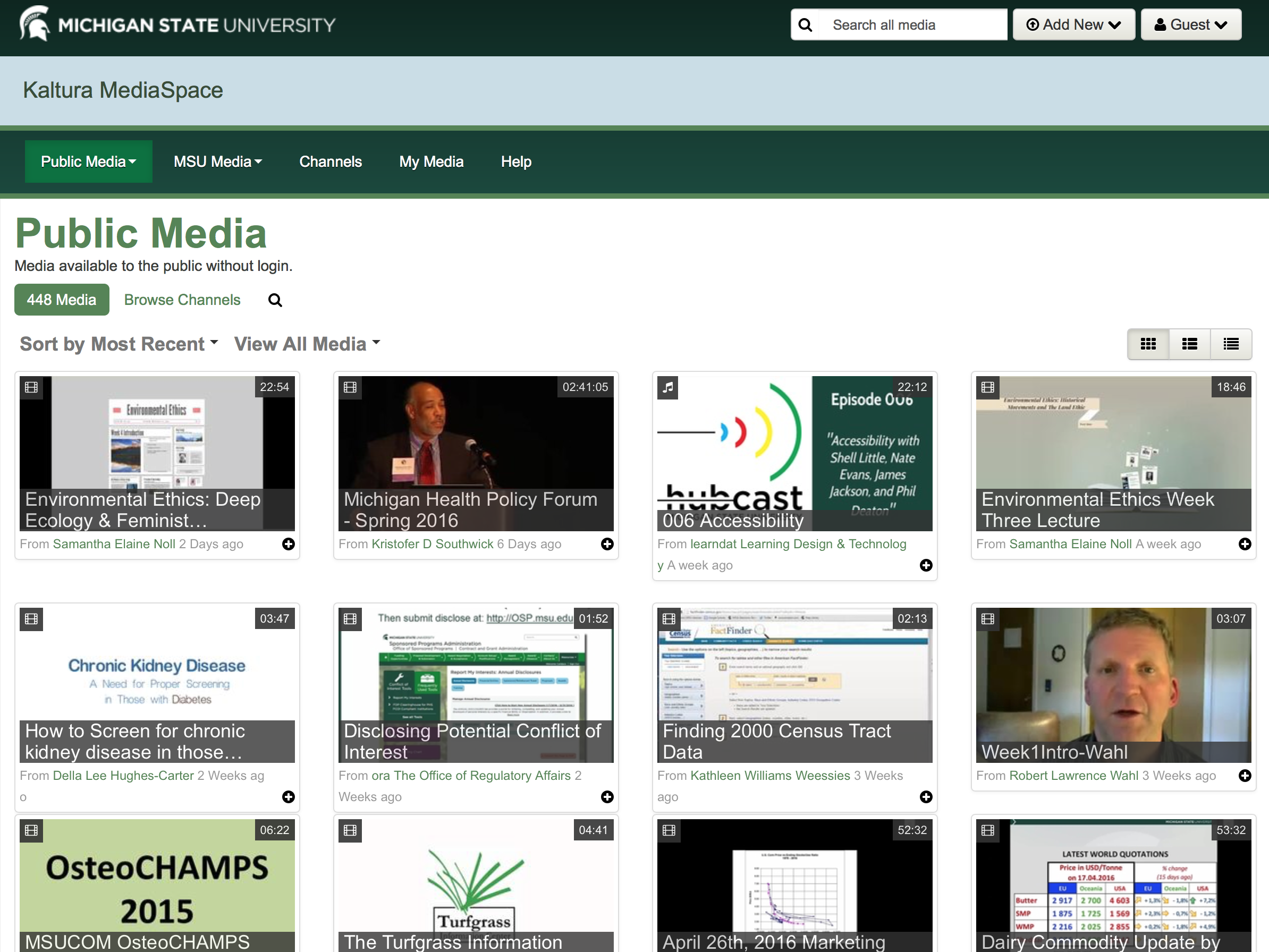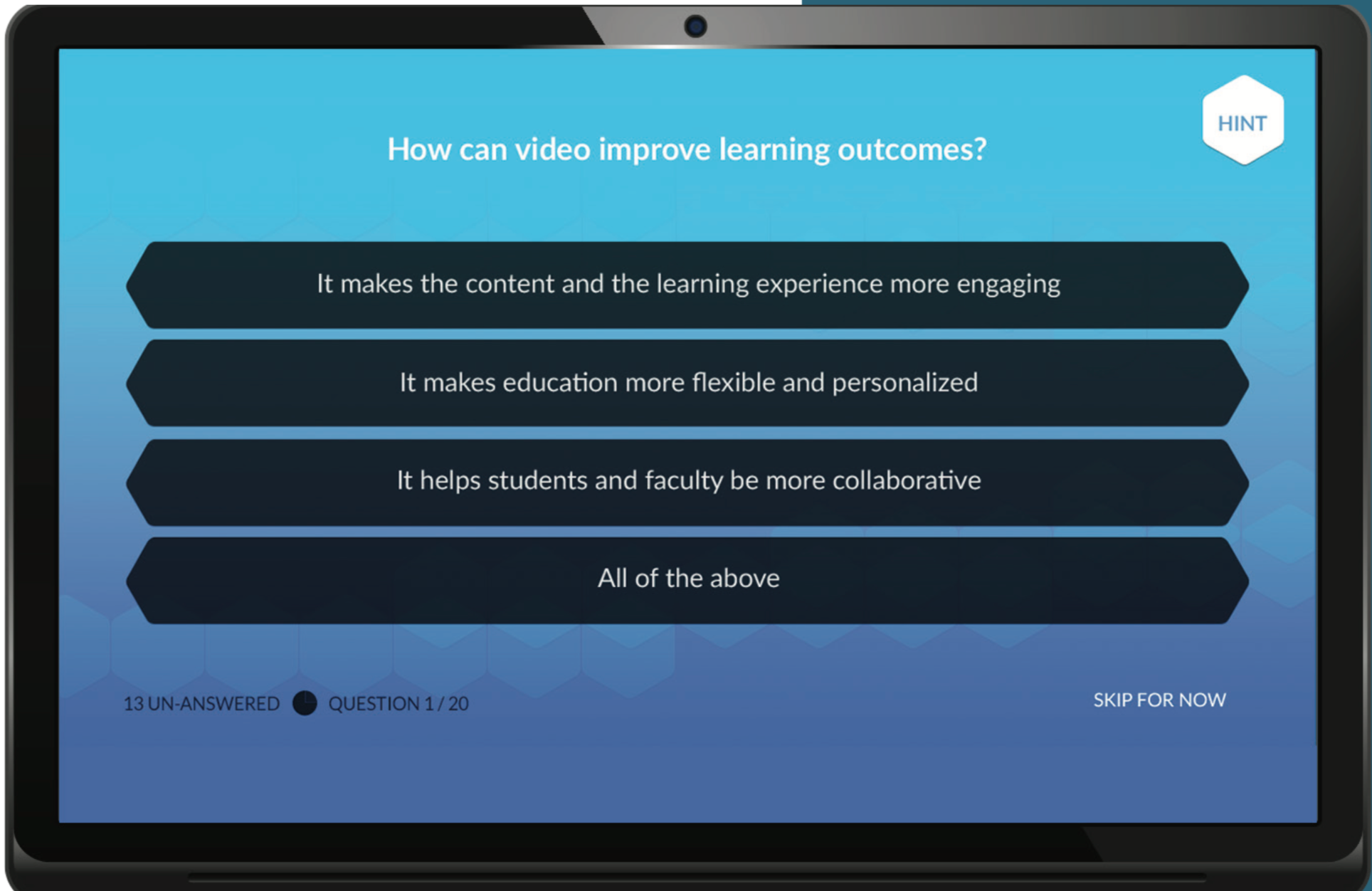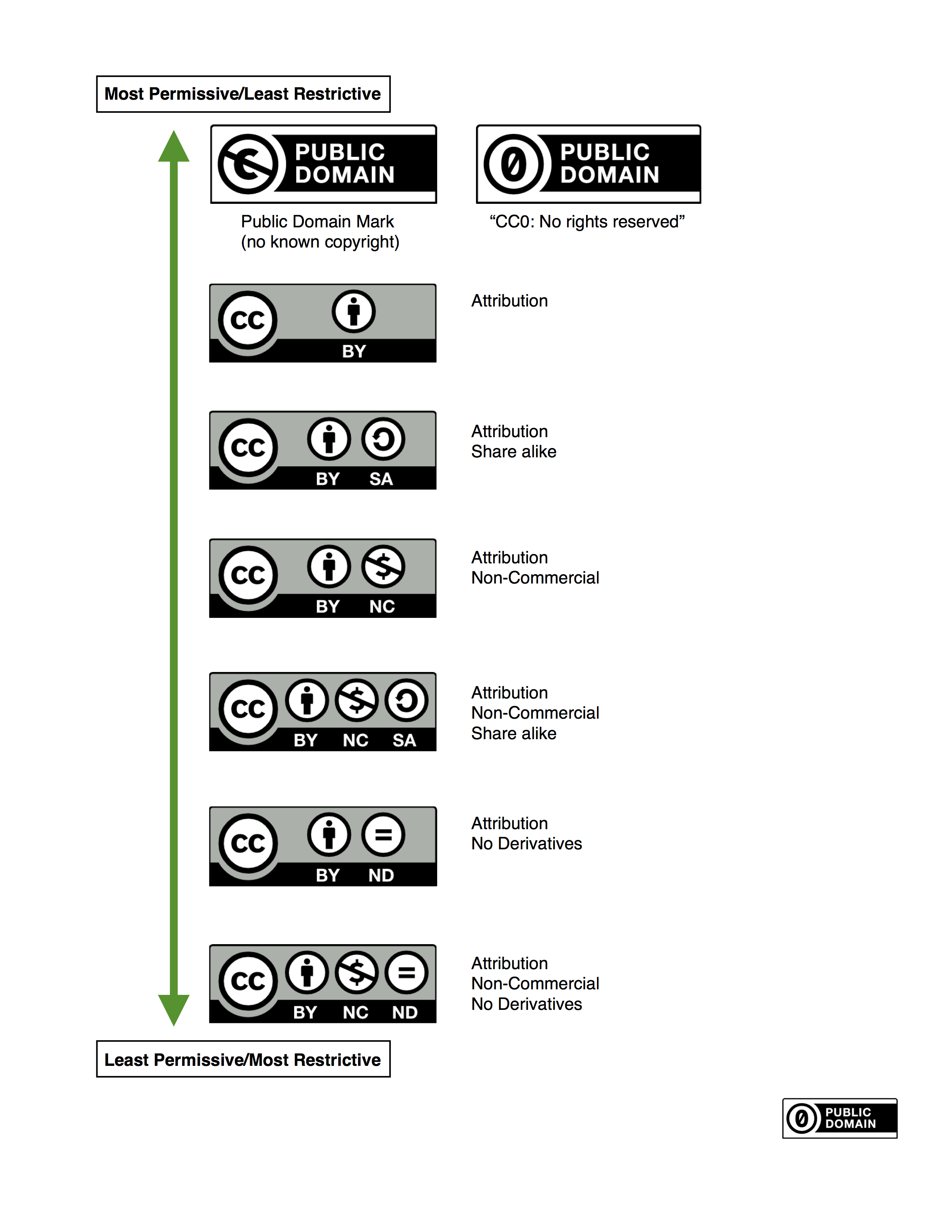Back in December twenty-four hardy souls braved the snow and ice to attend Ed Tech’s Instructor Gathering, one of our best turnouts yet. The broad theme of the event was tech tools and practices that benefit learning and each session proved a valuable mix of knowledge sharing and practical tips.

Tag: Audio
Using Pressbooks to create open course materials
Pressbooks is free online publishing software derived from Wordpress that you can use to create open educational content. While primarily a tool for creating open textbooks Pressbooks can be used for other purposes such as authoring support documentation, course guides or supplementary course materials in D2L/Brightspace or iWeb.
One of the advantages of Pressbooks is that it is very easy to use and it can output accessible content in a wide range of file formats. These include ePub (iBooks, Nook, Kobo etc.), PDF (for print/digital distribution), Mobi (Kindle) and the Open Document format. This means that students can easily read content on their mobile devices and there is an option for a web version of every book for reading in a browser.
The process of creating the book is straightforward and Pressbooks includes a number of templates to give your finished content a professional look. You can import from Microsoft Word or WordPress and the wizard-like interface includes colour-coded placeholders for things like learning objectives, exercises and key take-aways. As well as text you can easily add images, audio and embed video from sites like YouTube.
Pressbooks makes it easy to collaboratively author your content with colleagues, although only one person can work on a book at any one time. You can release the book under different licenses ranging from all rights reserved to public domain. BCcampus recommend using a CC BY (attribution) license if you would like to support open and accessible content and enable others to adapt your book.
To get started using Pressbooks Langara Faculty can sign up for an account using their Langara email address (note: must be in the format @langara.bc.ca). BCcampus will be hosting a training webinar on using Pressbooks on Tuesday January 24, 10 am. For more information on using Pressbooks talk to Julian Prior (Ed Tech) or Lindsay Tripp (Copyright Librarian).
A master list of 800 free classic eBooks
Read A Master List of 800 Free Classic eBooks for iPad, Kindle & Other Devices from open culture
You can see their full list of 800 offerings here. They may lack the sensory pleasure of print, but the ability to carry an entire library of classic literature in your pocket has its advantages, to say the least. And if your travels include long drives, you’ll also want to check out our master list of Free Audio Books.
full list of 800 offerings here. They may lack the sensory pleasure of print, but the ability to carry an entire library of classic literature in your pocket has its advantages, to say the least. And if your travels include long drives, you’ll also want to check out our master list of Free Audio Books.
Do more with video: Four great features of the new Kaltura
Kaltura (Langara’s multimedia streaming platform) is about to be upgraded. As well as continuing to provide an easily accessible way for instructors and students to upload video and audio content to D2L courses, Kaltura is introducing a number of new features. Here we highlight four that we are excited about – and we hope you will be too.
1. Kaltura MediaSpace
It has always been possible to upload videos to Kaltura in D2L. However, instructors have been asking us for a while whether there is a more user-friendly and visually appealing way to search, watch, upload and share their videos. Kaltura MediaSpace will bring a YouTube-like video portal to Langara with granular user controls over the management of videos, screencasts, audio and other content, including student content. All data is stored in Canada on UBC’s servers and all content uploaded to MediaSpace is private by default.
2. Closed Captioning
The Canadian Association of the Deaf have long advocated for the high quality captioning of all video for accessibility purposes. Closed captions in Kaltura are not a new feature – they have been available for a while. The upgraded version enables all users to upload SRT and other closed caption files rather than have Ed Tech do this for you. We are also currently evaluating the use of external video captioning services that integrate with Kaltura.
3. CaptureSpace
At Langara ‘Video Screen Capture’ (i.e Screencasting) is very popular with instructors who use it for a variety of purposes – whether that be providing audio and visual feedback on papers to students in the LEAP program, assisting a flipped classroom model or creating software walk-throughs. Up to now we have recommended and supported instructors in the use of a tool called Screencast-o-matic that we subscribe to for creating video screen captures. The upgraded version of Kaltura brings a new application called CaptureSpace that will be available to download for Windows and Mac computers. CaptureSpace allows you to capture your screen, screen and webcam, webcam only or voice. It also integrates nicely with Microsoft Powerpoint so allows instructors (and students) to easily create slides with narration.
4. Interactive Video Quizzing
Have we saved the best until last? The interactive video quizzing feature in the new Kaltura enables the embedding of multi-choice questions at any point in a video. This is a great way to improve engagement, interactivity and assess understanding. This feature will be available later in the year.
For more information on the Kaltura upgrade please contact Julian, Heidi or Ari in Ed Tech (edtech@langara.ca).
Creative Commons Workshop at KPU: A conversation with Paul Stacey
As part of Open Education week, I recently attended a workshop at Kwantlen Polytechnic University with Paul Stacey, Associate Director of Global Learning at the non-profit organization Creative Commons. Previously at SFU and BC Campus, Paul has been instrumental in driving the adoption of OER (Open Educational Resources) in the BC post-secondary sector.
Rather than give a traditional presentation, Paul adopted a more informal question and answer session with approximately thirty workshop participants. He started by explaining what Creative Commons licenses are and stressed they are still a form of copyright attached to a creative work. The difference between “all rights reserved” copyright and Creative Commons licenses is that under the latter the author stipulates a set of permissions so that others can use a creative work in certain ways under certain conditions. Unlike “all rights reserved” copyright, Creative Commons licenses are “some rights reserved:” they allow creativity while ensuring the author retains ownership rights over the work.
The licenses themselves are best thought of as being on a ‘permissiveness’ continuum from the most permissive and open (Public Domain marks and CC BY – Attribution) through to the least permissive (CC BY NC ND). Paul, along with organisations like JISC, advocates for the use of CC BY wherever possible. The different licenses themselves are explained very well on the Creative Commons website. There is also a great License Chooser Tool if you are unsure which license to use. Although earlier versions of CC licenses were country/region specific, the new version 4.0 can be applied globally regardless of geographical location.
Paul went on to demonstrate some real-world examples of the licenses in practice. The Librivox Free Audiobook Collection provides free audio recordings of books in the public domain. Similarly German-Japanese pianist Kimiko Ishizaka’s interpretation of Bach’s Open Goldberg Variations has been made available under a CC0 (zero) Public Domain license, meaning that any use can be made of the work without even the need for attribution. CC BY (Attribution) licenses are used by the OpenStax Textbook project and CC BY SA (Attribution, Share-alike) is used by Wikipedia. The board game Cards Against Humanity uses CC BY NC SA, online journal The Conversation uses CC BY ND and an example of the least permissive CC BY NC ND license is provided by the Teach AIDS website.
Openly licensing educational content has many benefits. Paul mentioned some of the more obvious ones such as the cost-savings to students of faculty adopting an open textbook, or the higher quality resources resulting from a collaborative peer authoring and review process. Beyond this, however, it is important to remember the core values of education that open educational practices support. Sharing and building on the ideas of others is fundamental to public education, as are academic freedom and innovation in teaching practice. Open textbooks, for example, increase academic freedom by taking control away from publishers and putting the potential to re-purpose and re-mix directly in the hands of faculty and students. Think, for example, of the exciting opportunities that exist to adapt textbooks for local contexts and update the content more regularly than traditional textbooks. Or think of the pedagogical innovations that might occur when we invite students to co-produce a classroom text?
Finally, Paul covered some important considerations when starting out with OER and open textbooks at an institution. Make sure you adopt a bottom-up as well as top-down approach, i.e get both senior management and faculty/student buy-in. Have a look around to see what exists already – at Langara, for example, we already have faculty in Physics and Math using open textbooks with their students; we’re not starting from scratch. Think about how OER will be stored, curated and distributed/shared. And have a clear institutional strategy that involves as many internal stakeholders as possible, while taking advantage of the ever-expanding wealth of resources and networks that are available in the open education space.
Julian Prior (Educational Technology Advisor)
Video and Multimedia in Education
| Back in 2008 the NMC/Educause Horizon Report stated “video is everywhere”1 in recognition of the transformative effects that the availability of relatively cheap and easy to use tools to edit and create video were having on teaching and learning. Fast forward seven years and we are continuing to witness the rapid growth of video and interactive multimedia in higher education as the success of platforms such as iTunes U, Khan Academy, Lynda.com and TEDx demonstrates. Our students—labelled by some the “Netflix generation” 2—are coming to Langara with heightened expectations of the role that multimedia should play in the learning lifecycle, from recruitment and course design to content delivery, assessment and feedback. They are equally aware that to succeed in the digital economy they need to demonstrate competence in using multimedia to communicate and collaborate effectively. Being digitally literate requires much more than simply being able to use a word processor or a spreadsheet programme.
This presents new challenges to instructors who perhaps are not always as comfortable as students are working with digital media. They may be understandably sceptical of the idea that binge-watching Netflix translates particularly well to the higher education environment where academic rigor, critical thinking and deep learning are prerequisites for student success. Even if instructors are convinced of the potential of video to enhance student engagement they may have questions about what makes for a compelling video, what the optimum length of a video should be, or how best to distribute it to their students. In my role as Educational Technology Advisor (Multimedia Specialist) I work with instructors to help answer these questions and assist them in developing the confidence to use, create and share multimedia in their teaching. Using multimedia effectively requires careful planning, an understanding of the importance of accessibility and an awareness of the myriad ways that it can support academic innovation. My job is to help instructors navigate through the potentially bewildering array of applications of multimedia to learning, whether that be screencasting, podcasting, video editing, audio feedback, digital storytelling or flipped learning. Our common aim is to stimulate the appetite of our students for engaging and meaningful learning by harnessing the potential of multimedia to improve learning outcomes. Julian Prior Educational Technology |
 |





